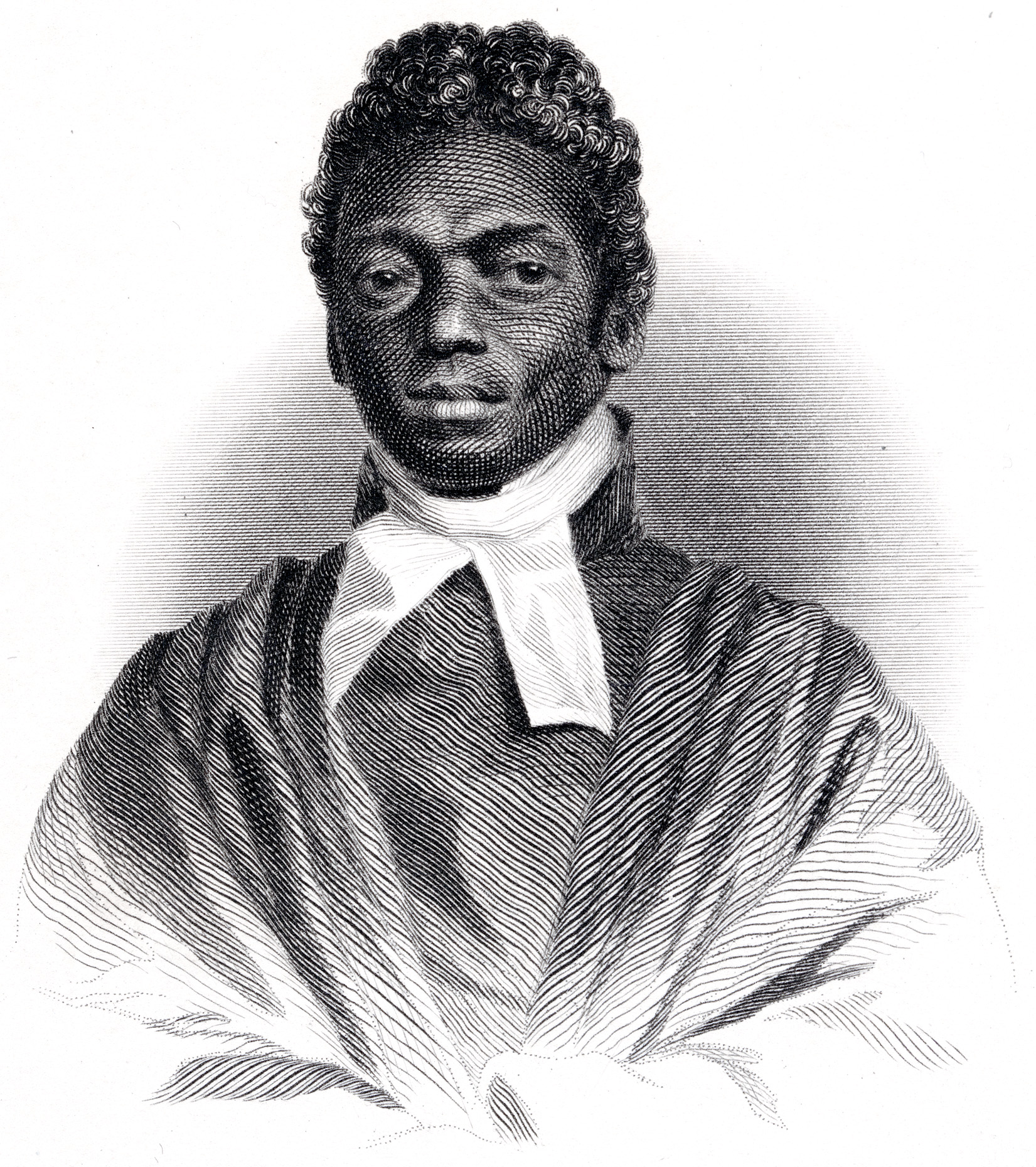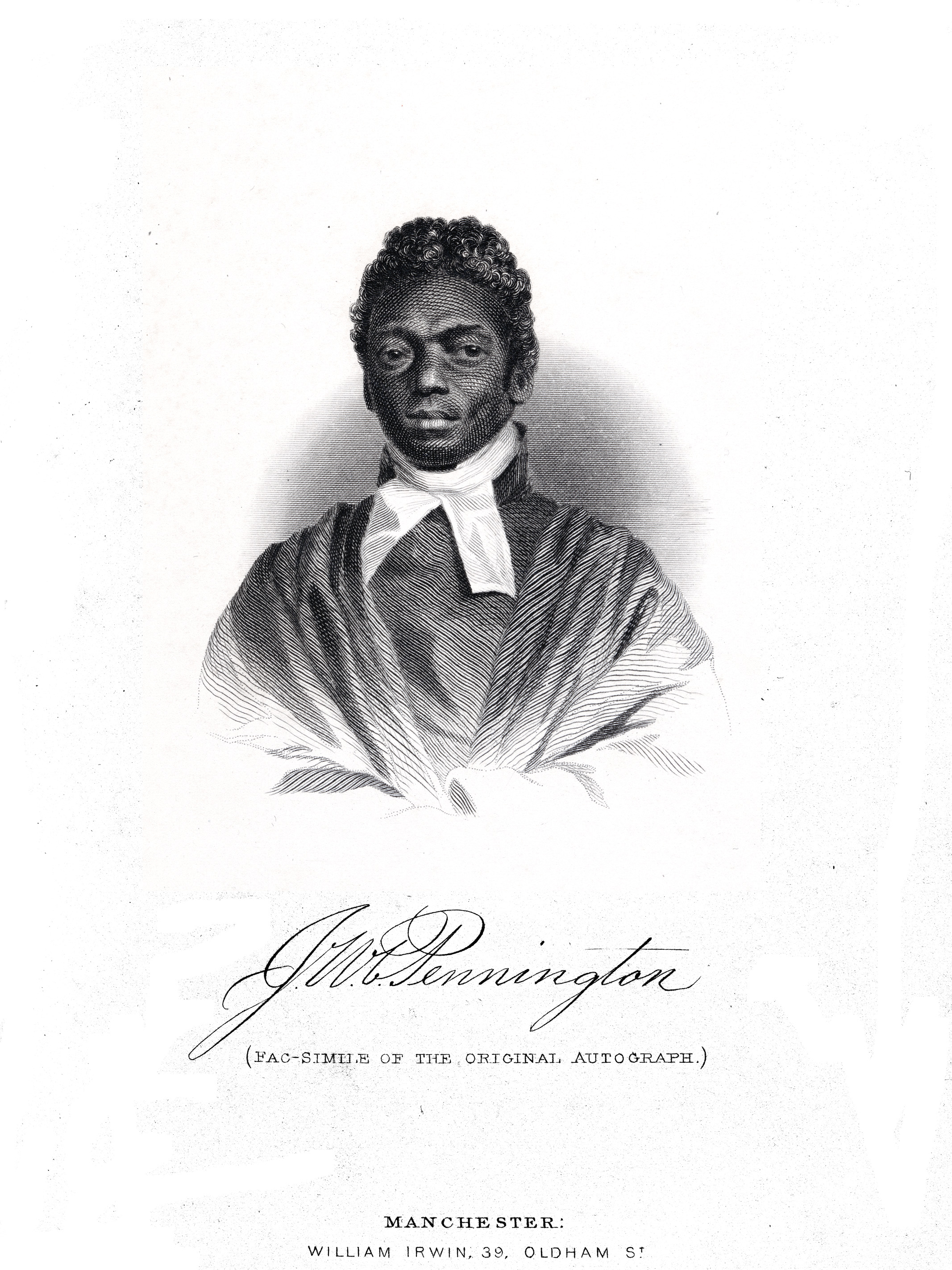A Tribute for the Negro by Wilson Armistead, 1848
James W. C. Pennington

The minister of the first Coloured Presbyterian church in New York, a man truly exemplary, and of high moral and religious standing, is a fugitive from Slavery. His parents and grand-parents were stolen from Africa and died in Slavery. He was therefore born a Slave, and remained one a considerable portion of his life. Such, in all probability, he would have continued to remain, had he not effected his escape from the oppressor;—have worn out his life in perpetual bondage, and ended his days, like most of his race, under the galling yoke of fetters and chains, or the smart inflicted by the whip of the unrelenting driver. This estimable man, who, in Slavery was degraded to nearly a level with the brute, is still liable to be re-enslaved according to the laws of the United States. In him we have a specimen of what the Slave population consists, and a living proof as to how far they are capable of being elevated, in a moral, intellectual, and religious point of view.
James W. C. Pennington was born in Maryland, in 1809. His grandfather was a Chief of the Mandingoes, and both his parents and grand-parents being Negroes, he is of pure African blood and descent. He was a Slave until twenty years of age, at which period he effected his escape.
The fugitive first found a shelter at the house of a Friend in Pennsylvania, with whom he remained six months. “It was while living with this Friend,” he observes, “and by his kind attention in teaching me, that I acquired my first knowledge of writing, arithmetic, and geography.” In these he made rapid progress during the six months, at the expiration of which, it became necessary for his safety to remove further north, to be more out of the reach of menstealers. He therefore removed to Long Island. Here, he soon felt the loss of his kind Friend and tutor, but he was successful in obtaining employment, and remained in the service of one gentleman for three years, during the whole of which period his scanty leisure was closely occupied in study.
Pennington had so far improved himself at the expiration of five years from the time of his escape from Slavery, that an application was made to him, to teach a small school of Coloured children, at New Town, near Flushing, on Long-Island. Being previously examined by a committee, his services were accepted, and he taught the school successfully for two years.
Having experienced, about three years prior to this period, a saving change of mind, and feeling a strong desire to become more useful, Pennington removed to New Haven in Connecticut, where he obtained a larger school, and also entered a Theological Seminary to prepare himself for the ministry. Here, he taught and studied history, astronomy, algebra, philosophy, logic, rhetoric, and systematic theology. At the expiration of three years he returned to New Town, renewed his former services there, and being also ordained as a minister of the Gospel, he soon gathered a flourishing congregation. After labouring here two years he was removed to Hartford in Connecticut, where he preached eight years, and part of the time also taught a school.
Pennington has been five times appointed to a seat in the General Conventions for the improvement of the Free Coloured people. In 1843, he was elected by Connecticut State, to attend the World's Anti-Slavery Convention; also by the American Peace Society to represent them in the World's Peace Convention, both these meetings being held the same year in London. On this occasion, he addressed the Anti-Slavery Convention at considerable length, his speech occupying several closely printed octavo pages in the report of the proceedings of that interesting and important assembly. It is well expressed, and contains much valuable statistical information. Our limits preclude any extracts being given.
During his visit in England, Pennington preached in many of the principal chapels of the Independents and other Dissenters. He moved on a footing of social and intellectual equality with the ministers and people of his own persuasion; he was, in fact, owing to his abilities as a preacher, sought out to supply the pulpits of some of the most popular ministers of the day.
On Pennington's return to America, he was received with much favour, and has subsequently exchanged pulpits with eight or ten of the leading ministers in Connecticut.

He is a member of the Hartford Central Association of Congregational Ministers, which consists of about twenty of the leading ministers of that denomination in the State. He has been twice elected President of this Association, in which capacity he presided over assemblies composed entirely of Whites. At a recent meeting at which he was chosen President, two young men presented themselves for licenses to preach. The rules require the President to examine the candidates on experimental religion, Church history, and various parts of theology. This he did acceptably; the White candidates were both licensed, and their certificates were signed by the Black President. One of the young men was a native of Kentucky, a Slave State, though not himself a Slave-holder. At the same meeting, Pennington was appointed a deputation to the General Conference of Congregational ministers of the State of Maine. A short time ago, a friend, without his knowledge, constituted him a member for life of the American Tract Society, by paying the necessary amount of money.
James W. C. Pennington is now the settled minister of the first Coloured Presbyterian church of New York, and is a member of the Presbytery. In 1841 he published a volume of about 100 pages, 12mo., entitled "A Text Book of the Origin and History of the Coloured People." He has also published an "Address on West India Emancipation," some sermons, &c. When the question of granting the privilege of citizens to the Coloured population was brought before the people of Connecticut, one of the public papers objected to the measure on the ground that the Blacks are inferior to the Whites. Pennington invited a public meeting, and refuted the calumny before a very large audience of Whites.
The portrait of this worthy man is engraved from a photograph, taken at the gallery of Samuel Topham, of Leeds, who kindly allowed the author the use of a duplicate he had preserved for himself.
A Tribute for the Negro: Being a Vindication of the Moral, Intellectual, and Religious Capabilities of the Colored Portion of Mankind; with Particular Reference to the African Race by Wilson Armistead, Manchester and London: W. Irwin, 1848. (PDF)